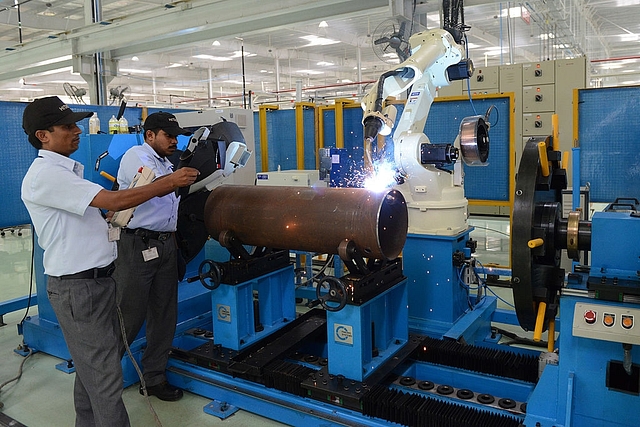
We May Be Celebrating Fall Of CPI Too Soon; Core Inflation Is Trending Up
To expect the RBI to somehow manage retail inflation when it does not have the tools to do so is meaningless. It should be asked to target core inflation instead.
The minutes of the Monetary Policy Committee (MPC) meeting, held on 3-4 October under the chairmanship of Governor Urjit Patel, and released yesterday (18 October), hold no surprises. They show that all six members, three from the Reserve Bank and three nominated by the government, voted unanimously for a 25 basis points rate cut (100 basis points make one percent).
The interesting point, one which should worry both the Reserve Bank and the government, was raised not by the RBI nominees, but by a government nominee, Chetan Ghate, professor at the Indian Statistical Institute. While backing the rate cut and observing that the “persistent slack in the economy” was ensuring that “corporate pricing power remains weak”, he also noted that “the persistence of core inflation remains a concern.”
Core inflation is non-food, non-fuel inflation, which can be broadly seen as manufacturing inflation. If there is one area where Reserve Bank policies can have maximum impact, it is in the manufacturing sector, which depends on formal finance from banks. So, if core inflation is persistently elevated, it means the RBI has not been able to impact inflation in the areas it is most able to do so.
Ghate was the only MPC member to point out the problem with core inflation. In September 2016, while the headline consumer price index (CPI) fell to a year’s low of 4.3 per cent, core inflation was head and shoulders above headline inflation at 4.75 per cent. It is not food or fuel which are stoking CPI inflation, but core inflation, which is currently strengthening..
There is no reason to panic, but core inflation could well remain elevated this year as growth is going to be driven by consumption, especially due to the Rs 1,02,000 crore being paid out to government employees under the Seventh Pay Commission, not to speak of the payments being made under the one-rank-one-pension policy for the armed forces.
Logically, the RBI should target core inflation, and not headline inflation, which is what is mandated under the agreement between the RBI and the finance ministry this year. This policy calls for the RBI to maintain CPI inflation within the 2-6 percent range, with four percent being the target middle rate to be achieved over five years.
Right now, it is core inflation that is moving out of the RBI’s comfort zone, and not non-core, which is food and fuel. After a good monsoon, food inflation will be under check this year, and fuel inflation depends on what happens to demand and supply globally.
Food inflation depends on factors like global weather, food production, minimum support prices (MSPs), and inter-state barriers to food movement, among other things. It is thus an area for fiscal and supply side policies, not monetary policy.
Fuel inflation again depends on external factors, including global growth, Opec’s output decisions, and winter temperatures in the northern hemisphere, among other things. If at all India has any control over fuel inflation, it is through taxation and long-term policies on increasing supplies of fossil fuels and promoting non-renewable sources of energy. Even then, it would not be wise to subsidise fossil fuels in the name of containing inflation in the short run. The government’s efforts to put a lid on gas prices have been a major factor in restricting gas output increases, and so trying to artificially keep prices down will damage our interests in the long run.
The only logical thing to do is to rework the government-RBI agreement to reflect this reality. The RBI should be asked to target core inflation, and the government should explicitly undertake to manage non-core inflation over the medium term, through supply side and taxation measures. The sharp fall in food inflation to 3.88 per cent in September is the result of the government’s moves to enhance pulses output, the good monsoon, and moderate increases in MSPs since 2014.
To expect the RBI to somehow manage retail inflation when it does not have the tools to do so is meaningless. Getting the RBI to target headline inflation means it gets praised for lower inflation when it had little to do with it (as now), and blamed for higher inflation in food and fuel, which again it can’t control.
We need both monetary and fiscal policy to deal with inflation, and the sooner this is recognised, the better.